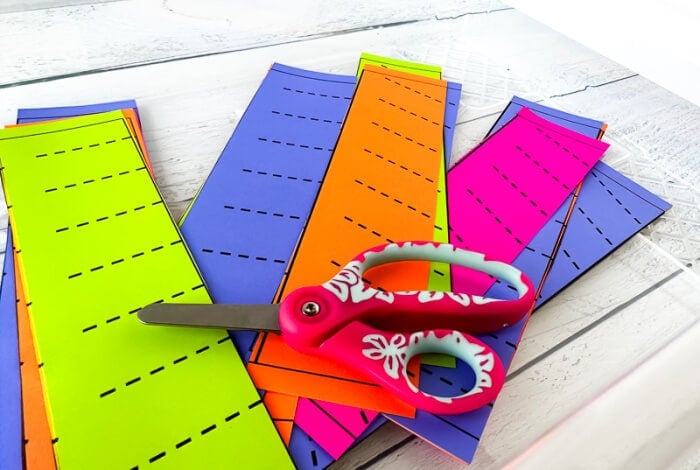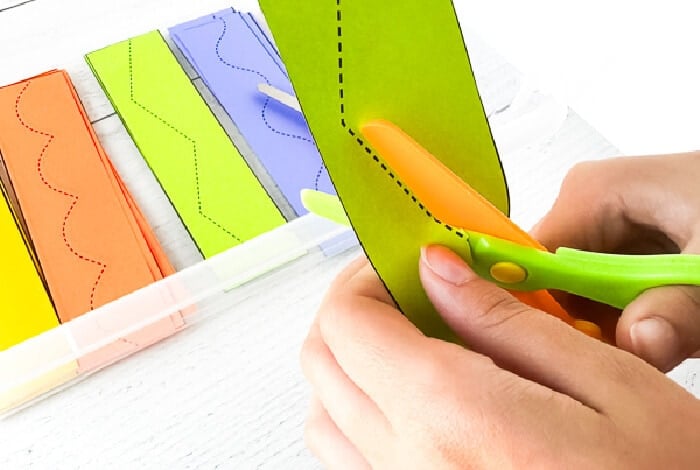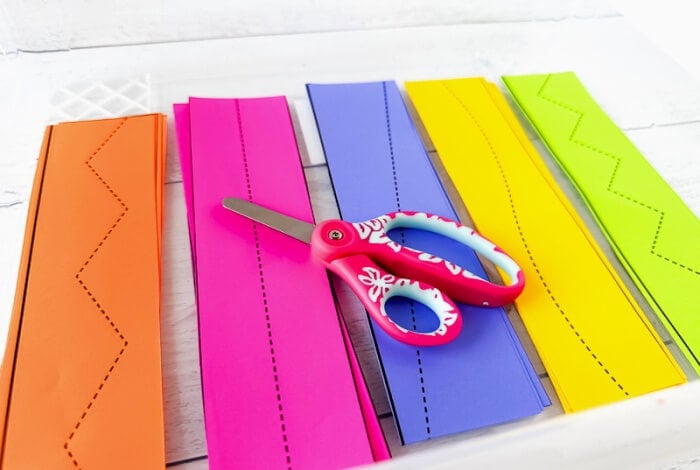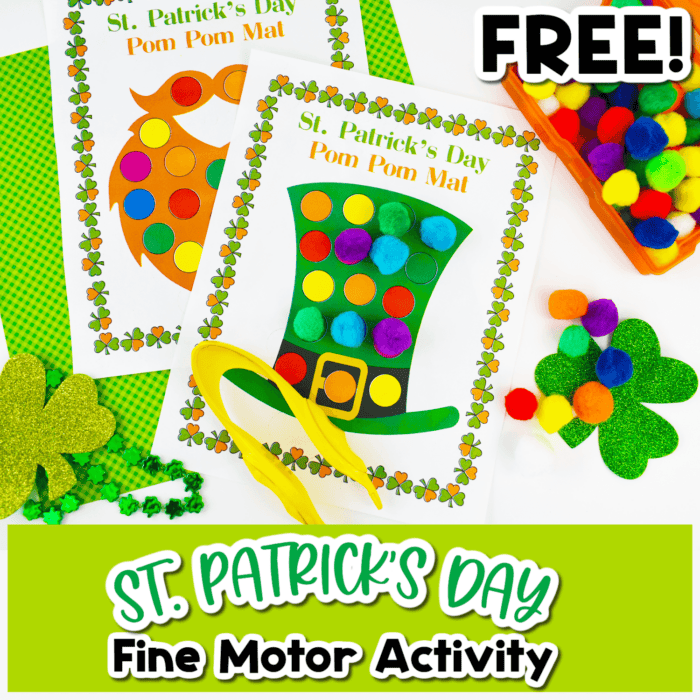Teaching Scissor Skills for Preschoolers
As scary as it may be to teach our children how to use scissors, the skill is so beneficial and all together necessary. Between the ages of 1.5 to 2 years children will start holding the scissors with two hands to open and close. By the age of 3 children can start practicing cutting paper. Cutting skills for preschoolers focuses on bilateral coordination, scissor grasp, as well as practicing other fine motor skills children need.
Tying shoes, brushing teeth, getting dressed, and writing words are all skills that need hand strength from fine motor skills. Our scissor skills printable can give our littlest fingers the practice they need.

Recommended Grade Level:
Benefits of Cutting With Scissors in Preschool
SCISSOR SKILLS DEVELOPMENT
BILATERAL COORDINATION IS USING BOTH SIDES OF THE BODY TOGETHER TO COMPLETE A TASK. THIS OCCURS WHEN YOUR CHILD HOLDS THE PAPER WITH ONE HAND WHILE OPENING AND CLOSING THE SCISSORS IN THE OTHER HAND.
Children will go through different steps before being successful with fine motor scissor skills. From 2 to 2.5 years, children are still learning how to hold and open/close scissors. It’s best to practice with safety or plastic scissors and begin with cutting soft things, like play dough.
This free cutting worksheet for fine motor skills is a simple way to get your kiddos to follow lines and curves on a paper. But you may ask, “What skills are needed to use scissors?” Great question my friend! One of the first steps in progressing towards cutting with scissors is tearing paper with their tiny fingers. Safety scissors are also highly recommended for first time scissor use.
Help the child remember to open and close their fingers by using the fun idea of an alligator chomping up and down on it’s food. Cutting straws, play dough, and making tiny fringe cuts on paper can also be great practice.
Our cutting practice worksheets include straight lines, diagonal, zig zags, curves, and fringes.
In addition to learning about holding the scissors, you can pose additional questions to young learners:
- What would happen to our scissors if the paper was really thick?
- Why do you cut bigger lines when you open the scissors wider?
- How are your fingers the same and different then scissors?

What Other Skills Are Practiced With Learning To Use Scissors?
BILATERAL INTEGRATION
LEARNING HOW TO USE SCISSORS CAN TRANSFER TO OTHER IMPORTANT SKILLS.
- Using a writing tool
- Cutting food
- Zipping a coat
- Tying a shoelace

Why Is It Important For Kids To Learn To Use Scissors?
Children are naturally curious about everything around them. Learning how to properly use this tool can benefit them in other ways.
Develop Hand and Eye Coordination
Children have to use both their hands and their eyes in order to cut something. They will also use hand/eye coordination when throwing and catch a ball as well as cleaning up their toys.
Improve Focus
Making sure you stay on the path you want your scissors to go takes focus and attention. Focusing on a task will help with later academic endeavors.
Improve Bilateral Coordination
Using scissors correctly helps children use both sides of their body at the same time. Children also need this skill for riding a bike and taking a bath.
Inspire Creativity
When children can use this tool they have another opportunity to create wonderful art using their new skill. Cutting colored paper, tissues, playdough, and other fun materials can be a great creative outlet.
How To Use The Scissor Skills Development Activity
Step One:
Use a printer to print the scissor cutting template of your choice. You can add colored paper to make it more interesting.

Step Two:
Cut apart and/or fold any of the templates you want to use.

Step Three:
Let children practice with their safety or regular scissors. Make sure children are monitored closely as they use the scissors.

Extend the Activity:
Sticker Stoppers
Use stickers or smiley faces at the end of the line to show the child where to stop cutting.
Make A Collage
Have your kiddo practice their new cutting skills by creating a collage. Use magazines and newspapers and let them choose the theme (favorite food, favorite toys, signs of fall, etc.)
Pair With Music
Play music while your child is cutting to help them with a steady rhythm. Open, shut, open, shut.
Scissor Monster
Put googly eyes on your students’ scissors to make a scissor monster that takes big bites out of their paper.
Use Different Materials
Give your students different materials so they can compare the different pressures they will use with different materials. Cardboard, tissue paper, play dough, and newspaper can be great comparisons.
Sensory Mats
Try our School Supply Playdough Sensory Mats to build upon already developing fine motor skills.
Do you love this activity? Pin it for later!

join the newsletter & Get your free activity
Get Your Free Printable Activity Here!
Already a subscriber? No worries. Just enter your email here to have the activity sent directly to your inbox.
More Fine Motor Activities You’ll Love:
- 10 Books That Build Fine Motor Skills
- Pipe Cleaner Fine Motor Rainbows
- Alphabet Fine Motor Tracing Mats
More Fine Motor Crafts:
Even More Fine Motor Activities For Kids:
Search All Activities
Looking for more? Find exactly what you need here:
















